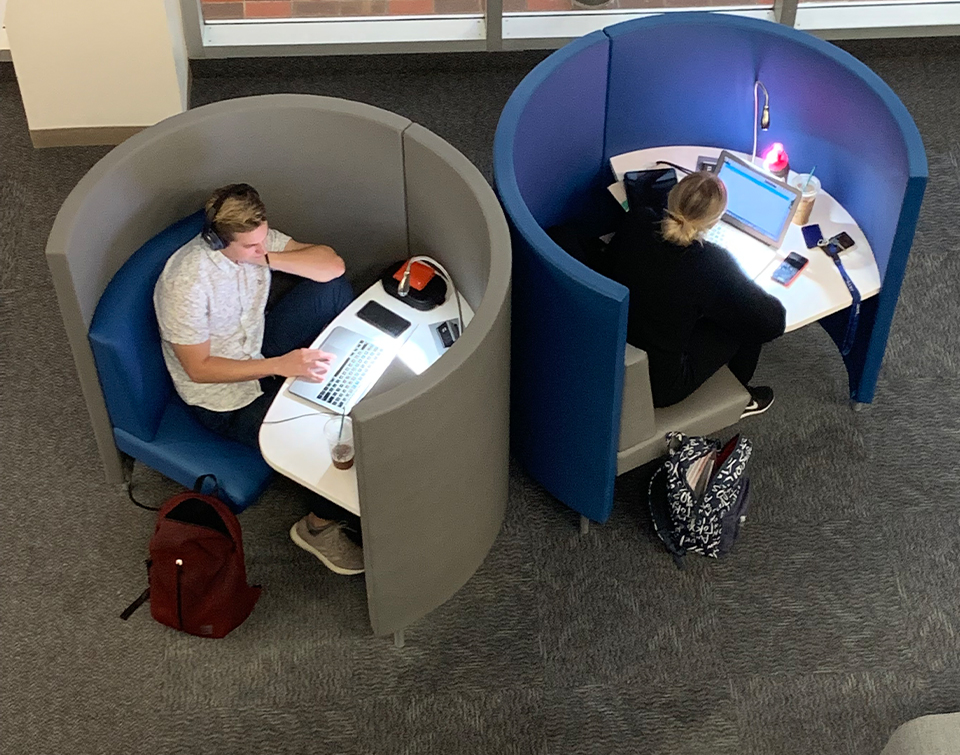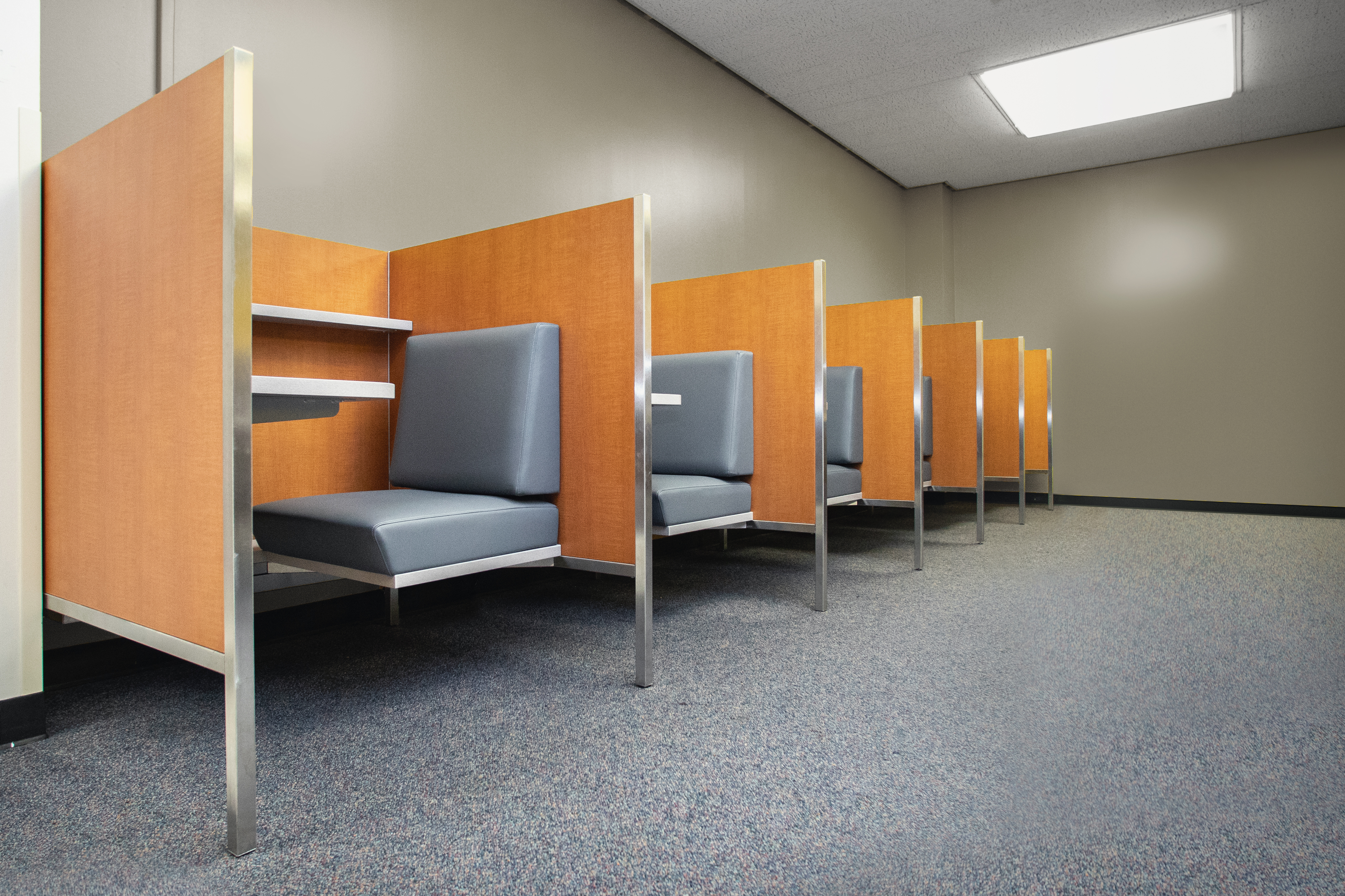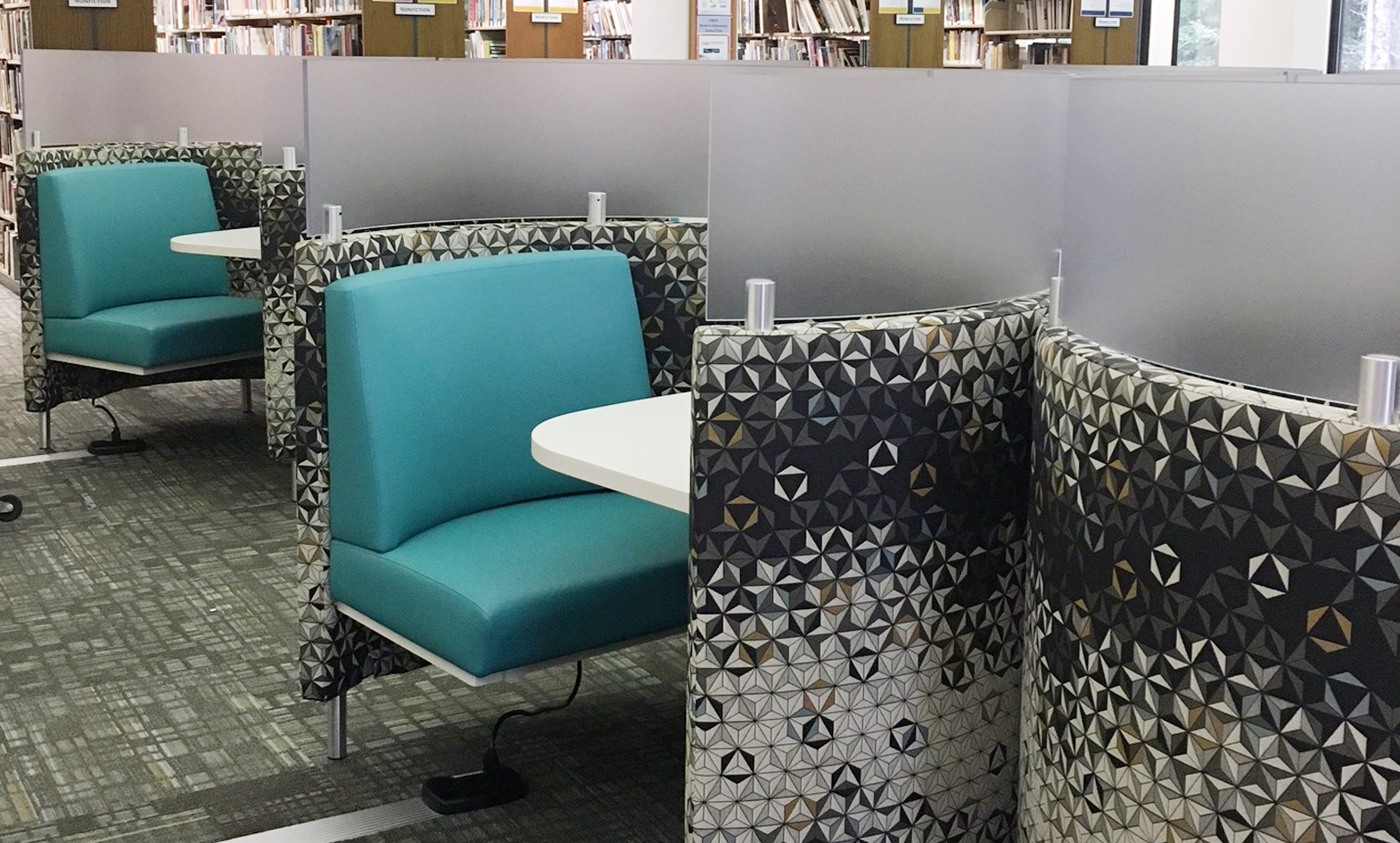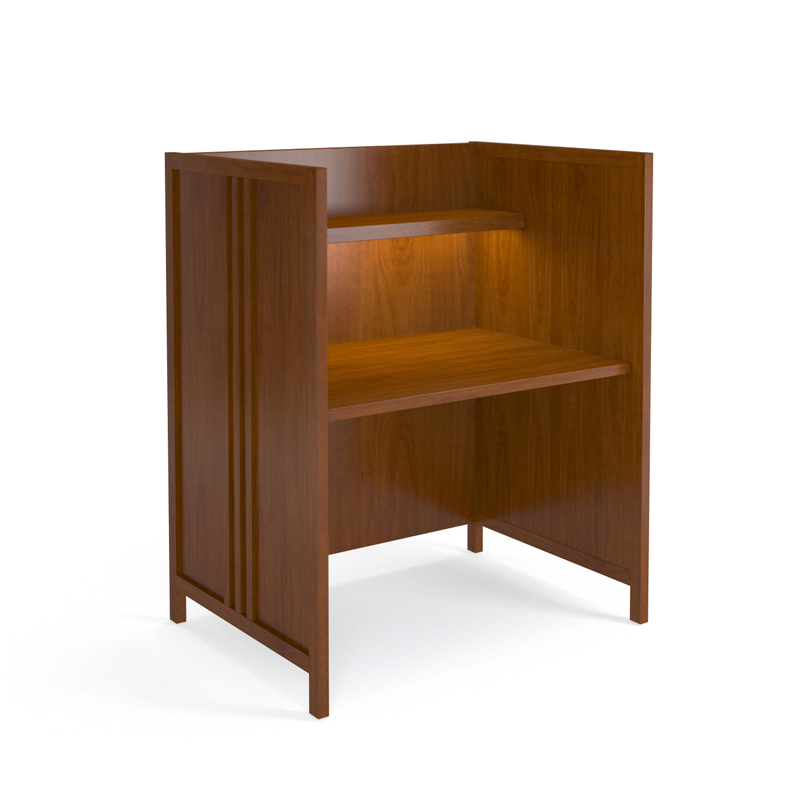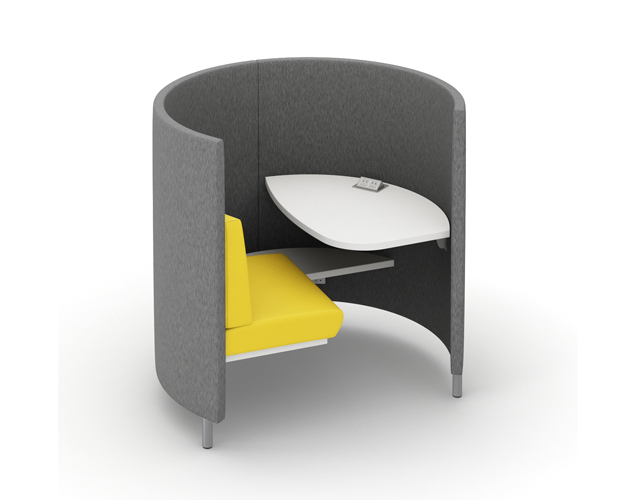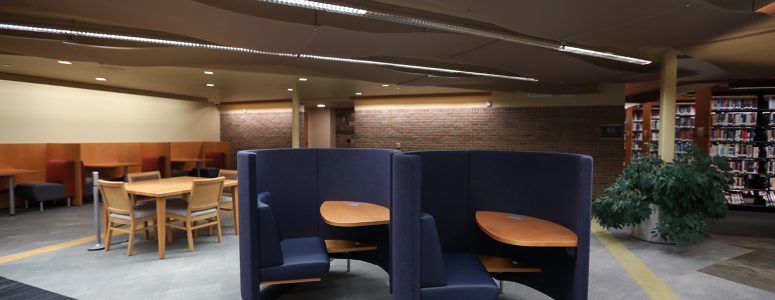
People like to claim and protect their own space.
We all know this to be true. And we see it at play in our spaces all the time.
From the “lost seat” factor commonly seen at community tables to the natural gravitation towards study carrels that are closer to a wall, or even the popularity of bar-height seating in most facilities, these are all examples of people claiming and protecting their space.
The reason for this?
Because it’s natural and innate for us as humans.
Sure, we’re not searching for caves and guarding ourselves against dinosaurs anymore, but the innate tendencies remain. We want to claim space that is ours, protect ourselves from any potential dangers or distractions, while being able to survey the area around us.
The “fancy” names for these needs are Refuge and Prospect. (We take a deep dive into Refuge and Prospect, and the study of biophilia overall, in this post!)
In short:
Refuge is the ability to find haven from the main flow of a space, and often consists of a covering for an individual’s back. The desire for refuge ultimately plays on our subconscious need to feel protected and secure.
Prospect is the ability to survey your environment (line of sight). Put simply, when people are in a public space, they want to at some level be aware of what’s going on around them.
*Credit to Terrapin Bright Green for their ongoing research into biophilia. Click here to download their free report on biophilic design.*
Human Behavior & the Popularity of Study Carrels
Study carrels have, in many ways, stood the test of time. They are staples in public and university libraries for a reason, and we have even seen airports start to feature them for travelers. (Check out examples here and here.)
Traditional study carrels have been effective at providing refuge in spaces for decades. They help balance the mix of individual and group work in a space, and are designated places for people to “claim” by spreading their materials out, allowing them to more easily focus and remain productive.
In more recent years (pioneered by our team here at Agati), side-entrance carrels have also been recognized for some improvements on the traditional design. In addition to increased refuge (the back is covered with side-entrance carrels), users also have prospect as they can easily look out one side of the carrel. This creates a calming effect for the user, improving productivity and reducing stress.
Both carrel styles have value. The unique flow of your space, and the needs of your community, will inform which type of study carrel(s) would function best.
Expert Tips for Featuring Traditional or Side-Entrance Carrels in Your Space
We’ve been designing furniture specifically for public spaces for nearly 40 years. That’s a long time, and we’ve learned quite a bit along the way!
Here are a few suggestions to consider as you evaluate your current carrels and consider future furniture solutions:
Traditional Study Carrels
Traditional carrels can be a great staple in a space, especially if they’re used intentionally. Here are some suggestions:
- Be sure to keep panel height to 48″ whenever possible.
- Have the side panel extend beyond the work surface. This small act will increase the feeling of refuge for carrel users.
- Wider is better whenever possible. When a carrel is too narrow, it creates feelings of discomfort and becomes a distraction. Striving for 42″ wide is a great goal.
- For traditional carrels, incorporating task lighting increases the user experience tremendously. The traditional design blocks light a lot more than side-entrance carrels.
Side-Entrance Study Carrels
Side-entrance carrels are an effective haven for users, and are the best balance of prospect and refuge for single users. Whenever you can utilize a study carrel that covers users’ backs, this will increase the feeling of refuge and increase productivity. Here are some suggestions:
- Be sure to keep panel height to 48″ for side-entrance carrels as well. If you go too high, users lose their ability to have Prospect.
- Having the back covered is key to the feeling of refuge.
- Task lights are not usually necessary in side-entrance carrels. Because the entrance is on the side, it will naturally let more light in.
- In most spaces we’ve furnished, round carrels seem to be preferred over rectilinear carrels by the end user.
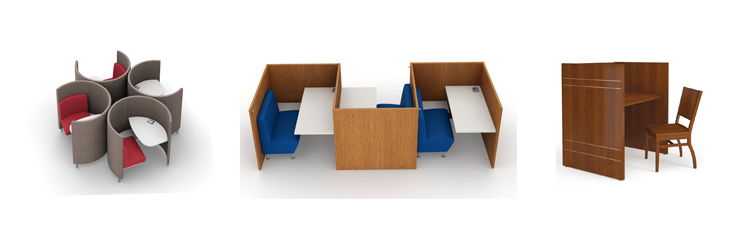 Interested in chatting about your space? Message one of our experts today!
Interested in chatting about your space? Message one of our experts today!
